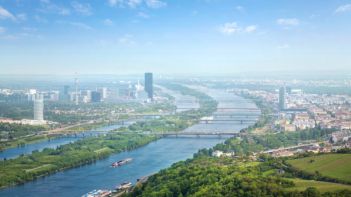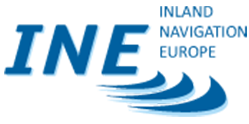Shaping policy for more and better waterway transport
20 June 2016
What main developments did 2015 bring in policy and industry and what long-term measures does INE advocate for 2016 amid the trends which are rapidly changing the face of transport.
The economy, energy & climate policy and digitalization are the 3 main drivers in the changes transport is currently undergoing, including inland waterways. A flatlining economy and austerity has led to a historic low in infrastructure investment, while inland shipping already faces a backlog in investment with long-term bottlenecks and delays in maintenance as a consequence. New investment in waterways creates jobs on board and shore show the studies around the Seine-Scheldt project.
The COP21 Climate Agreement in Paris and the EU Energy Union & Climate Goals drive the decarbonisation of transport. Inland shipping works on smart steaming and clean energy while a sustainable vessel lifecycle ensures a low production footprint.
Finally, digitalization and automation transform transport business models. River Information Services evolve into a Digital ecosystem where authorities provide and enable services to remove barriers for the use of waterway transport in the supply chain. The first projects around vessel automation have been submitted.
INE’s priorities: waterway-friendly transport policy, infrastructure investment & digitalisation
With INE, we continue to advocate firmly for a EU transport, infrastructure and digital policy that makes inland shipping easier-to-use. Inland waterways is the fastest grower after road transport. More freight by water develops regions, relieves congestion and reduces transport’ carbon footprint.
EU inland navigation policy
Naiades2, the EU inland waterway transport action plan is in implementation with harmonisation of technical requirements, education and greening of the fleet. INE and its partners campaign for an ambitious follow-up and continuity in funding.
Towards EU inland waterways core network
Waterway managers are committed to lift bottlenecks on waterways that stand in the way of seamless navigation. Creating a stable investment pipeline when public budgets are under pressure is a huge challenge. That requires a sound balance between grants and financial instruments in CEF.
Digital inland waterway area
The deployment of River Information Services continues. Waterway managers have joined forces to link up national & regional IT applications so EU corridor management becomes possible. The next step is to swiftly connect to other modes to strengthen inland waterways’ position in supply chains.
The year in figures
In 2014, inland waterways shipped in total 552 million tonnes, a new after crisis record. This is an increase in tonnage by 3.3%, but we see a decrease in distances travelled. The outlook for 2015 builds on the trends of 2014.
INE members’ highlights
Just to name a few. The cross-border project Seine-Scheldt goes ahead with a near 1 billion EU grant. Opening is planned in 2023. The Belgian king opened the Lanaye lock near Liège and the FAIRway project prepares the full deployment of the Danube Infrastructure Masterplan.
Read more in our Annual Report 2015



